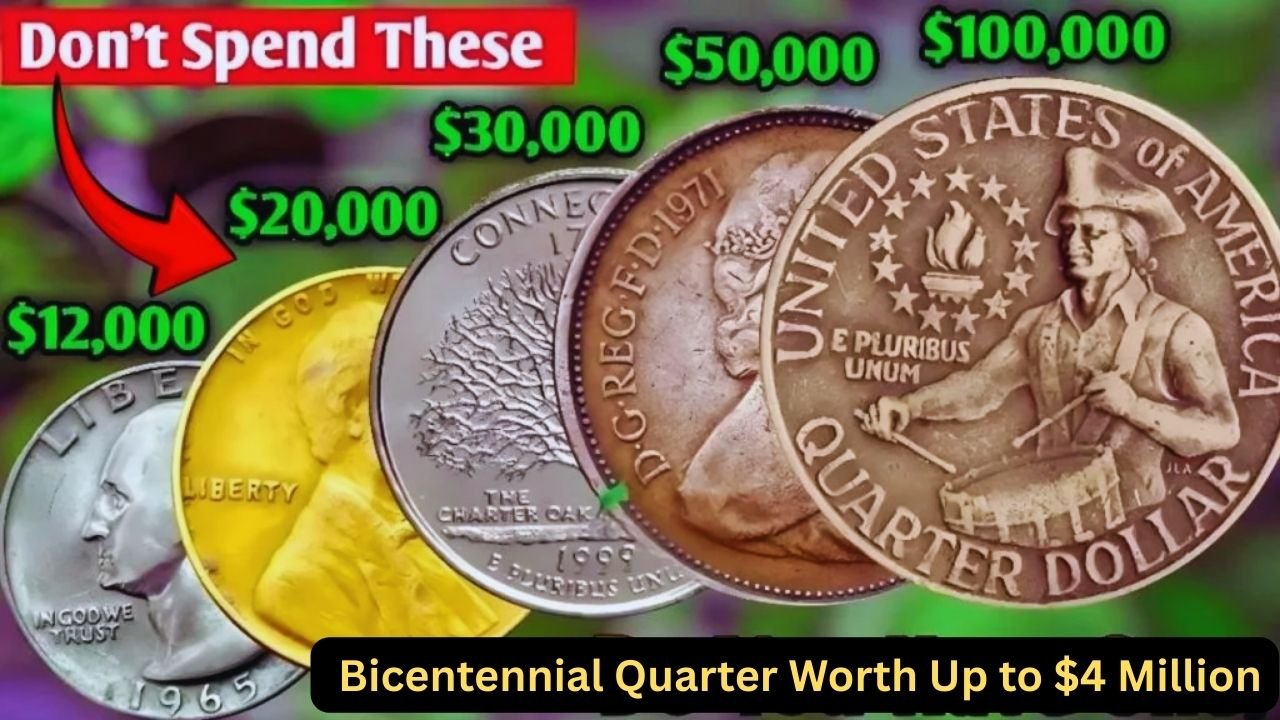In 1976, the United States celebrated its 200th birthday with great excitement. To mark this special moment, the U.S. Mint created the Bicentennial Quarter, a unique coin with a design unlike regular quarters. Most of these quarters are worth just 25 cents, but a few rare ones can fetch up to $4 million at auction. Could you have one in your pocket or coin jar? This article explains what makes these quarters so valuable and how to spot one.
A Special Coin for a Big Celebration
The Bicentennial Quarter stands out because of its unique look. The front shows George Washington with the dates 1776-1976, honoring America’s independence. The back features a colonial drummer boy, a torch, and 13 stars for the original colonies. Over 1.6 billion were made in Philadelphia, Denver, and San Francisco, so they’re common. But certain versions, like those with errors or made of silver, are what collectors hunt for.
What Makes Some Quarters So Valuable
Not every Bicentennial Quarter is worth millions. The rare ones have special features: some were struck in 40% silver, mainly from San Francisco, and others have minting errors like double strikes or off-center designs. A famous example is the Double Die Obverse quarter, where letters like “LIBERTY” or the date look slightly doubled. One such coin sold for $4 million in 2025 due to its rarity and perfect condition.
How to Check Your Quarter
Spotting a valuable quarter takes a sharp eye. Start by looking at the mint mark, a small letter near Washington’s ponytail. A “D” means Denver, an “S” means San Francisco, and no mark means Philadelphia. Silver quarters, often from San Francisco, are heavier (about 6.25 grams) than regular ones (5.67 grams). Use a magnifying glass to check for doubled letters or blurry designs. A shiny, mirror-like finish could mean it’s a proof coin, which is also more valuable.
| Feature | Regular Quarter | Rare Silver Quarter |
|---|---|---|
| Weight | 5.67 grams | 6.25 grams |
| Mint Mark | D or None | Usually S |
Common Errors to Look For
Minting errors make some quarters extra special. A double die error shows doubled text or images, especially on “LIBERTY” or “1776-1976.” Off-center strikes happen when the design is misaligned, leaving part of the coin blank. Some quarters were struck on the wrong metal, like a dime’s planchet, making them rare. These errors can turn a 25-cent coin into one worth thousands or even millions.
| Error Type | Description | Potential Value |
|---|---|---|
| Double Die | Blurry or doubled text | Up to $4 million |
| Off-Center | Misaligned design | Hundreds to thousands |
What to Do If You Find One
If you think you’ve found a rare quarter, don’t clean it. Cleaning can ruin its value. Store it in a soft plastic holder and take it to a coin shop or grading service like PCGS or NGC. They can confirm if it’s valuable. Check your spare change, old collections, or bank rolls. These coins can still pop up in everyday places like vending machines or piggy banks.
A Piece of American History
The Bicentennial Quarter is more than just money. It’s a reminder of America’s 200th birthday celebration. Even common ones hold historical charm, but finding a rare one could change your life. Grab a magnifying glass, check your quarters, and you might discover a treasure worth millions hiding in plain sight.
